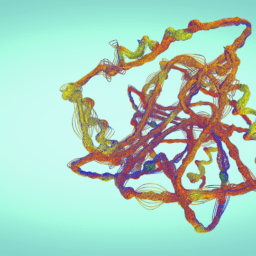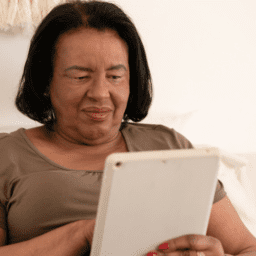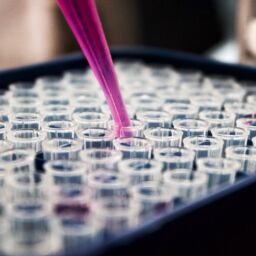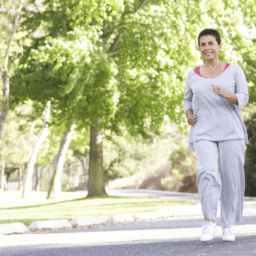Fall has arrived with cooler temperatures and a wealth of new discoveries about Parkinson’s. We’ve rounded up some of the most important articles, podcasts, research, and living well stories that hit the news this month for you to check out. Let us know if we missed anything important. Happy reading!
PARKINSON’S ARTICLES AND PODCASTS
- The conclusion of a study just published in the leading neurology journal Brain states that Parkinson’s is not one but two diseases, starting either in the brain or in the intestines. Researchers believe this is why people with Parkinson’s describe widely differing symptoms and that personalized medicine may be the way forward for people with Parkinson’s.
- Researchers at the Florey Institute of Neuroscience and Mental Health are among those concerned that coronavirus may cause damage to the brain. They are currently working on a smell-test screening tool that could measure a person’s ability to smell properly, as well as testing the function of other parts of the brain. The results of the screening may signal early indications of Parkinson’s.
- A research team from the Luxembourg Centre for Systems Biomedicine (of the University of Luxembourg) published results in Science Translational Medicine in which they identified for the first time how an error in the production process of a protein called DJ-1 can lead to the development of a certain form of Parkinson’s. The team also identified potential pharmacological treatments to address this malfunction of protein synthesis.
- Researchers at the University of São Paulo published in the journal Movement Disorders a study showing how freezing of gait can be mitigated by means of resistance training with instability, designed to stimulate different motor and cognitive skills simultaneously.
- In the journal Stem Cell Reports, researchers at Johns Hopkins Medicine shared results from a study which indicates that the production of new mitochondria is critical to the maintenance and survival of dopamine neurons, and that targeting a certain gene (known as PARIS) with drugs to lower its protein levels may provide a new way to treat Parkinson’s.
- A well-known biomarker that can lead to earlier diagnosis of neurodegenerative diseases is now detectable in the eye, according to a study by Boston Medical Center researchers. The study’s results offer scientists and doctors another way to use information about what’s happening in different parts of the body to detect the presence of neurodegenerative diseases like Parkinson’s before any actual neurodegeneration takes place.
- A Consumer Reports analysis of five years of data from the Department of Agriculture explains what fruits and vegetables often exceed safe levels of pesticides. The article offers ways to minimize risk to pesticide exposure (which the Environmental Protection Agency says is tied to Parkinson’s, as well as asthma, bronchitis, non-Hodgkin’s lymphoma, and prostate and lung cancers) by choosing produce grown with fewer and safer pesticides.
- Conducted by researchers in the labs of E. James Petersson, Robert Mach, and Virginia Lee, a new proof-of-concept study could change the paradigm for how researchers screen and test new molecules for studying a wide range of neurodegenerative diseases, including Parkinson’s.
- Mutations in the leucine-rich repeat kinase 2 (LRRK2) gene are one of the most common genetic causes of Parkinson’s, and LRRK2 is also overly active in many people with idiopathic Parkinson’s (so-called because the disease has no identifiable genetic or other cause). The Michael J. Fox Foundation has awarded a three-year, $7.2 million grant to researchers at the University of California, San Diego who are studying the structure and biology of LRRK2. “Understanding how the structure of LRRK2 changes in different states and with different disease mutations will be key to developing treatments,” one of the researchers said.
- This month, University of Wisconsin–Madison researchers published findings in the journal Cell Stem Cell of a proof-of-concept stem cell treatment in a mouse model of Parkinson’s. The researchers found that neurons derived from stem can integrate well into the correct regions of the brain, connect with native neurons, and restore motor functions. The scientists found that the cells’ identity—dopamine-producing cells in the case of Parkinson’s—defined the connections they made and how they functioned. Results of the study indicated that stem cells were essential for restoring the mice’s Parkinson’s-damaged brains and suggested that this kind of genetic switch technology could be used to fine-tune the activity of transplanted cells to optimize treatment.
- In two episodes available from the Parkinson’s Vitality Project Podcast, occupational therapist Cassie Lorie shares how occupational therapy can help people with Parkinson’s live their best lives.
- When Life Gives You Parkinson’s features a September podcast about life three years after diagnosis and the impacts of COVID-19 on the show’s creators and other people living with Parkinson’s.
PARKINSON’S THERAPIES AND MEDICATIONS
- Researchers at Nanyang Technological University in Singapore have developed a slow-release pill that delivers dopaminergic medication over a period of 24 hours. This new delivery system can provide a controlled and sustained release of medications, thus enabling better management of Parkinson’s symptoms.
- A new therapy for Parkinson’s symptoms — continuously infused apomorphine — is in the last steps prior to US Food and Drug Administration (FDA) approval. Administered through a pump under the skin (usually in the stomach or thigh), infused apomorphine aims to lessen total daily OFF times in people with Parkinson’s whose symptoms cannot be controlled with oral medications.
- In a recent study, adding a low dose of the anti-arrhythmic drug flecainide to modafinil alleviated excessive daytime sleepiness in some people with Parkinson’s.
- A trial beginning this fall in France will examine whether light therapy can improve symptoms of Parkinson’s. Seven patients will have a fiber optic cable implanted in their brain that will deliver pulses of near-infrared light directly to the substantia nigra, a region deep in the brain that degenerates in Parkinson’s. The researchers hope the light will protect cells there from dying.
- ONGENTYS® (opicapone) capsules are now available in the US. ONGENTYS is indicated for adjunctive treatment to levodopa/carbidopa in patients with Parkinson’s experiencing OFF episodes.
- A neurosurgeon with Mayfield Brain & Spine is the first in the region to implant the Medtronic Percept™ deep brain stimulation system to treat Parkinson’s. It is the first and only DBS system in the US with technology that allows clinicians the ability to capture and record a patient’s brain signals while delivering the DBS therapy. With the BrainSense™ technology, doctors can track patient brain signals and correlate them with patient-recorded actions or experiences, such as symptoms, side-effects, or medication intake. The feedback will allow for more personalized neurostimulation treatment.
PARKINSON’S LIVING WELL STORIES
- In a recent interview with Parkinson’s Life, Davis Phinney shares his story and dedication to living well with Parkinson’s and helping countless others do the same. “I don’t spend much time, if any, musing about things like a cure for Parkinson’s,” he says. “I prefer to focus on the areas that I can positively affect – here and now.”
- Recognizing that many people with Parkinson’s experience handwriting challenges, Neurocrine Biosciences recently launched a “Cards to Heroes” campaign, designed to encourage people whose handwriting has been affected by Parkinson’s to write a brief note of appreciation to their hero. You can learn more about the campaign at pdcardstoheroes.com.
- Two leading Parkinson’s experts and Journal of Parkinson’s Disease Editors-in-Chief have guided the development of a special supplement to the Journal of Parkinson’s Disease, which focuses on management strategies to help people living with Parkinson’s stay positive and well.
PARKINSON’S SURVEYS AND CLINICAL TRIALS
If you’d like to be part of early research efforts that are looking into the efficacy of service dogs for those living with Parkinson’s, you can take this survey here.
Parkinson’s and Service Dogs – University of Groningen, Netherlands
Neurology Study Interest Registry – University of Rochester
Park Test – University of Rochester
Project Euphonia – LSVT Global and Project Euphonia
BouNDless – Phase 3 trial to investigate the efficacy, safety, and tolerability of ND0612, a continuous subcutaneous levodopa/carbidopa delivery system in comparison to oral levodopa/carbidopa in people with Parkinson’s experiencing motor fluctuations
Home Based Tele-exercise Study for People with Chronic Neurological Impairments – Burke Neurological Institute
WANT MORE PRACTICAL ARTICLES LIKE THIS?
Much more can be found in our Every Victory Counts® manual. It’s packed with up-to-date information about everything Parkinson’s, plus an expanded worksheets and resources section to help you put what you’ve learned into action. Request your free copy of the Every Victory Counts manual by clicking the button below.
Thank you to our 2020 Peak Partners, Amneal and Kyowa Kirin, with special support from Adamas, for helping us make printing, distributing, and shipping the Every Victory Counts manual possible.

















